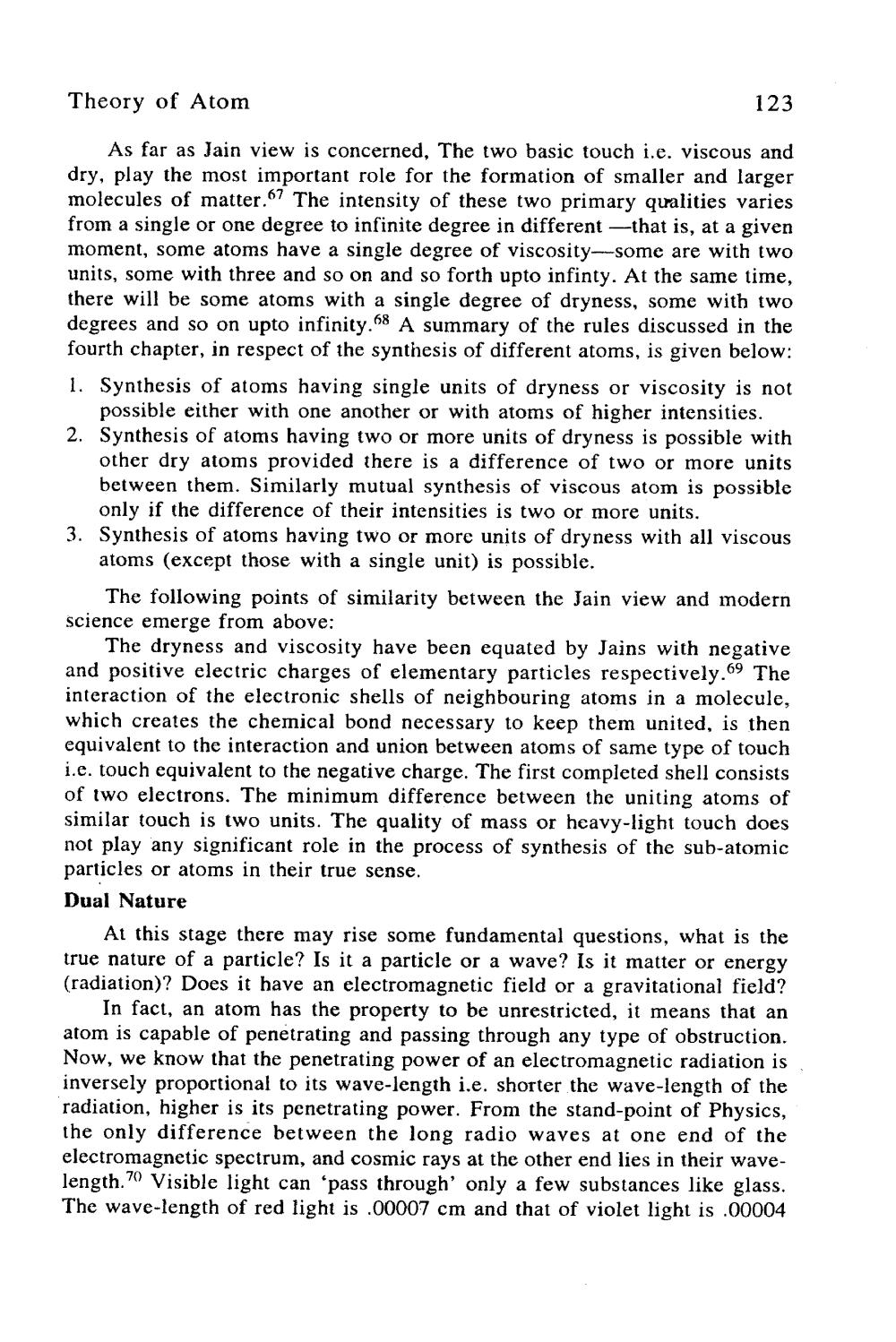________________
Theory of Atom
As far as Jain view is concerned, The two basic touch i.e. viscous and dry, play the most important role for the formation of smaller and larger molecules of matter.67 The intensity of these two primary qualities varies from a single or one degree to infinite degree in different that is, at a given moment, some atoms have a single degree of viscosity--some are with two units, some with three and so on and so forth upto infinty. At the same time, there will be some atoms with a single degree of dryness, some with two degrees and so on upto infinity.68 A summary of the rules discussed in the fourth chapter, in respect of the synthesis of different atoms, is given below: 1. Synthesis of atoms having single units of dryness or viscosity is not possible either with one another or with atoms of higher intensities.
2. Synthesis of atoms having two or more units of dryness is possible with other dry atoms provided there is a difference of two or more units between them. Similarly mutual synthesis of viscous atom is possible only if the difference of their intensities is two or more units.
3. Synthesis of atoms having two or more units of dryness with all viscous atoms (except those with a single unit) is possible.
123
The following points of similarity between the Jain view and modern science emerge from above:
The dryness and viscosity have been equated by Jains with negative and positive electric charges of elementary particles respectively.69 The interaction of the electronic shells of neighbouring atoms in a molecule, which creates the chemical bond necessary to keep them united, is then equivalent to the interaction and union between atoms of same type of touch i.e. touch equivalent to the negative charge. The first completed shell consists of two electrons. The minimum difference between the uniting atoms of similar touch is two units. The quality of mass or heavy-light touch does not play any significant role in the process of synthesis of the sub-atomic particles or atoms in their true sense.
Dual Nature
At this stage there may rise some fundamental questions, what is the true nature of a particle? Is it a particle or a wave? Is it matter or energy (radiation)? Does it have an electromagnetic field or a gravitational field?
In fact, an atom has the property to be unrestricted, it means that an atom is capable of penetrating and passing through any type of obstruction. Now, we know that the penetrating power of an electromagnetic radiation is inversely proportional to its wave-length i.e. shorter the wave-length of the radiation, higher is its penetrating power. From the stand-point of Physics, the only difference between the long radio waves at one end of the electromagnetic spectrum, and cosmic rays at the other end lies in their wavelength. .70 Visible light can 'pass through' only a few substances like glass. The wave-length of red light is .00007 cm and that of violet light is .00004




